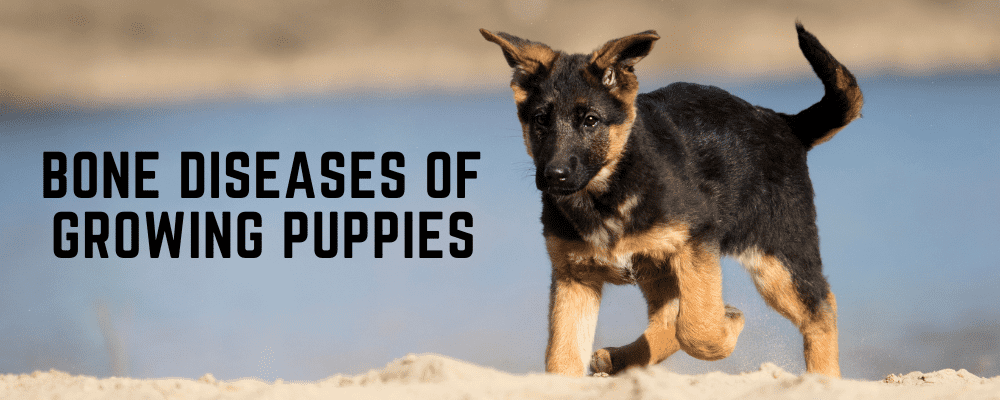Do you have a young dog that has been limping for several days and wondering what is causing it?
There are many causes of limping and lameness in young dogs. Most of these are relatively minor and resolve without medical or surgical intervention. However, there are other causes that are more serious and, if not treated promptly, may result in permanent lameness or lead to debilitating arthritis.
Because of the possibility of permanent lameness, your veterinarian will recommend a thorough examination and x-rays if lameness or pain lasts more than 7 to 14 days. X-rays are usually performed to investigate persistent lameness or pain in young dogs. Radiographs of the affected leg are necessary in order to get an accurate assessment of various bones and joints. In many cases, this will require a short-acting anesthetic or sedative in order to achieve the optimal positioning for diagnostic purposes.
Some puppies are born with genetic conditions passed from their parents. These conditions are often more common in some breeds than others. There are few genetic diseases that just affect the bone and joints.
Hip Dysplasia is an improper formation of the hip joint(s). The hip joint is a “ball and socket” joint. Hip dysplasia results in the ball not being round, the socket not being deep, and the two not fitting together properly. Hip dysplasia has two common causes, genetics and improper diet. A dog of the high-risk breeds for hip dysplasia should not be bred before radiographs of the hips are taken. Large-breed puppies should be fed a special diet and not overfed to help reduce the risk of hip dysplasia.
Dogs with severe hip dysplasia have great difficulty going from a lying to a standing position and are in pain when they walk. Dogs with mild hip dysplasia may show no signs of lameness. However, as the dog ages it will usually experience difficulty rising and may be reluctant to run and play. There are several choices of treatment depending on the severity. Some dogs can be treated with medication while others will require surgery.
Elbow Dysplasia is a developmental abnormality affecting mostly large breed dogs that can have a variety of components. Dogs with this disease are lame on the affected leg(s) and they may cry when the elbow is extended. In some cases it results from a lack of fusion of the top of the ulna at the rear point of the elbow. This is more properly termed ununited anconeal process. When this part of the ulna does not fuse, the joint is unstable and is quickly subject to arthritis. Treatment requires surgery. In other cases the specific problem may a fragmented coronoid process or osteochondrosis dissicans. These conditions may be helped with arthroscopic surgery.
Patellar Luxation is can be diagnosed at a young age, as young as eight weeks old. Other times it does not show up until the puppy is skeletally mature, near a year of age. It affects small breeds most commonly, but large breed dogs can get it to. Unfortunately, because this condition is genetic, puppies do not grow out of a luxating patella. They may require surgery if the condition is causing pain or a loss of function in the affected limb.
Since some of these disorders affect primarily large breed dogs during their growing years, maintaining an appropriate plane of nutrition during that time may help decrease the chances of your pet developing some of these disorders. Talk to your veterinarian about the best diet for your dog as he grows and matures into adulthood. A proper diet may help your dog maintain healthy joints and hips!
